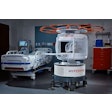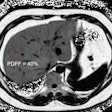CHICAGO - Whether it’s a single cappuccino, double nonfat half-caf latte, triple espresso, mocha quattro grande, or just a mug of house blend, 54% of U.S. adults slurp down at least one cup of coffee each day. If you’re a radiologist planning a cerebral perfusion or functional MR imaging (fMRI) study, you need to know if the patient is a java junkie, according to research conducted at Wake Forest University in Winston-Salem, NC.
Dr. Aaron Field, now at the radiology department at the University of Wisconsin in Madison, presented results Wednesday at RSNA from a study to determine the effects of caffeine use on cerebral blood flow (CBF) in perfusion and fMRI studies. Field and his colleagues set out to see if common levels of coffee consumption demand special efforts to control for caffeine effects in perfusion imaging and, if so, whether such efforts must address potential differences between regular coffee drinkers and occasional or non-drinkers.
The researchers used a dietary questionnaire to calculate average daily caffeine intake for 11 healthy adult subjects. The study participants were then categorized as low (n=6, with a mean of 35 mg a day) or moderate to high (n=5, with a mean of 574 mg per day) in their caffeine intake.
Each subject then underwent quantitative FAIR (flow sensitive alternating inversion recovery) perfusion MR imaging twice. The first imaging study was conducted 60-90 minutes after a participant swallowed 250mg of caffeine (equivalent to 2-3 cups of coffee).The second exam took place on a separate day with the participant ingesting a placebo as part of the randomized, single-blind, counterbalanced study design.
Both exams were preceded by at least 30 hours’ abstention from caffeine, so that the placebo condition would reflect a state of withdrawal in the high caffeine users. Brain maps of CBF were automatically gray-white segmented, and a mean CBF was calculated separately for both anterior and posterior cerebral circulation. The team then analyzed the data by means of a two-way analysis of variance (ANOVA) with repeated measures as well as linear regression.
Field said that caffeine reduced CBF in all subjects with a %change of -23±9% in gray matter and -19±12% in white matter (calculated as mean ± standard deviation). The group determined that this effect was significant in the gray matter of both anterior (p=.0004) and posterior (p=.001) circulations.
The high caffeine users showed significantly higher gray-matter CBF values than the low user group, but only in the anterior circulation (p=.009). When the data was analyzed as a linear regression of gray-matter, post-placebo CBF onto daily caffeine intake, the researchers found that it was significant (p=.013) only in the anterior circulation. The team also observed that the magnitude of the CBF response to caffeine was independent of daily caffeine intake.
Field said that because of withdrawal effects, the regular coffee drinker must be treated differently than the occasional or non-drinker; specifically, restricting caffeine in all subjects prior to imaging is inadequate to control for caffeine effects. This is due to the high caffeine user having higher CBF than low caffeine users after either caffeine or placebo ingestion.
"We need to know the caffeine intake of our patients, both the frequency of their intake and when they had their last cup of coffee," said Field.
By Jonathan S. Batchelor
AuntMinnie.com staff writer
November 28, 2001
For the rest of our coverage of the 2001 RSNA meeting, go to our RADCast@RSNA 2001.
Copyright © 2001 AuntMinnie.com

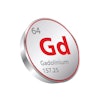
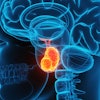
.fFmgij6Hin.png?auto=compress%2Cformat&fit=crop&h=100&q=70&w=100)



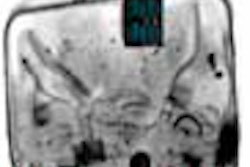
.fFmgij6Hin.png?auto=compress%2Cformat&fit=crop&h=167&q=70&w=250)





